Span 43 cm / 17 in
Weight 46 g / 1.6 oz ready to fly
The concept:
- shoulder-wing monoplane
- pilot silhouette in open cockpit
- for RPU 20
- detachable landing gear
- good flight characteristics
- few parts
- easy to build
Name: ‘No hay más cerveza en la nevera’ is Spanish and translates into: there is no more beer in the fridge. Improve your Spanish, repeat your Spanish regularly, become or be a Spanish speaker.
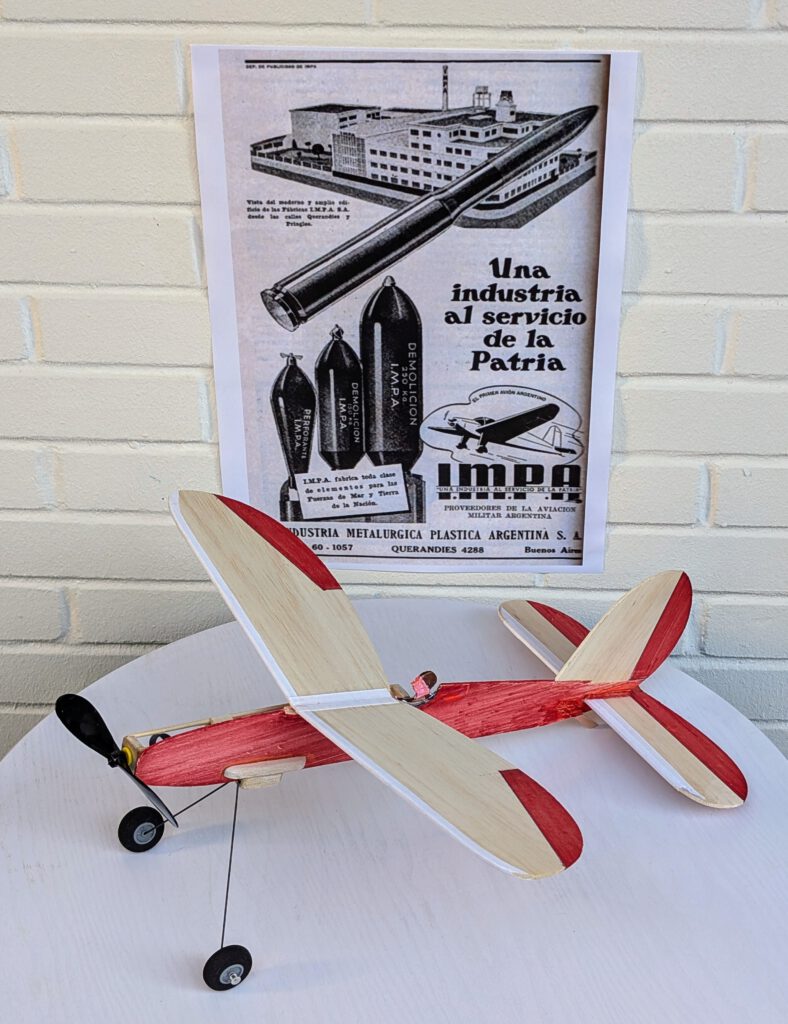
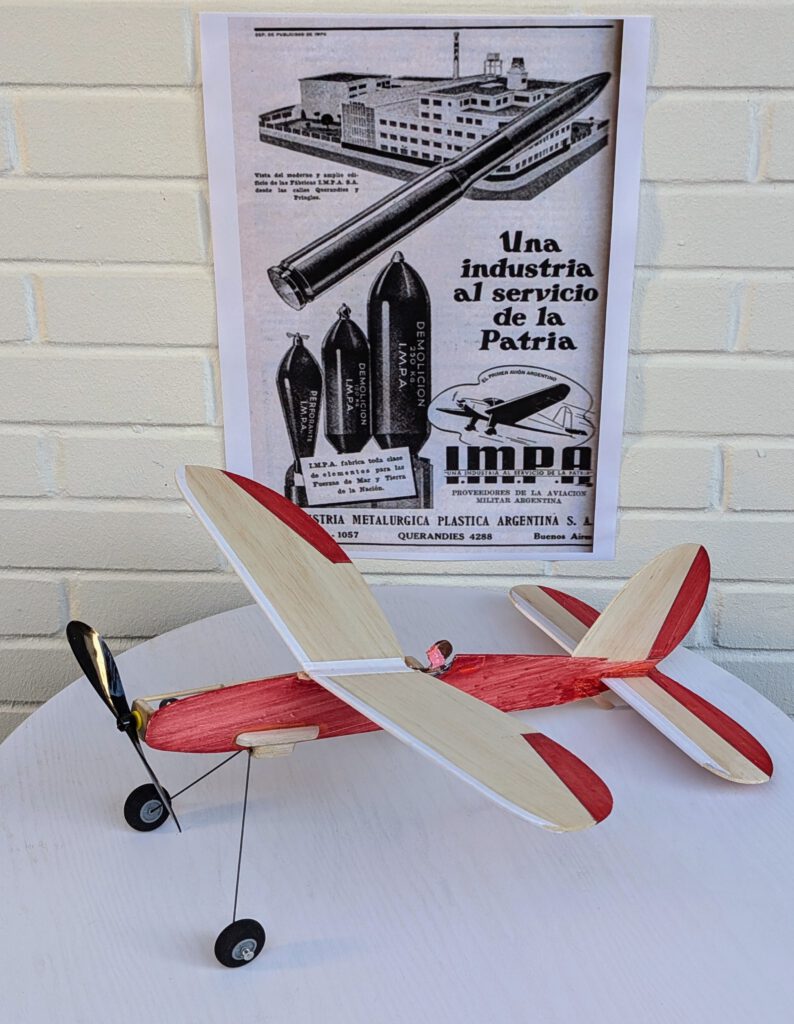
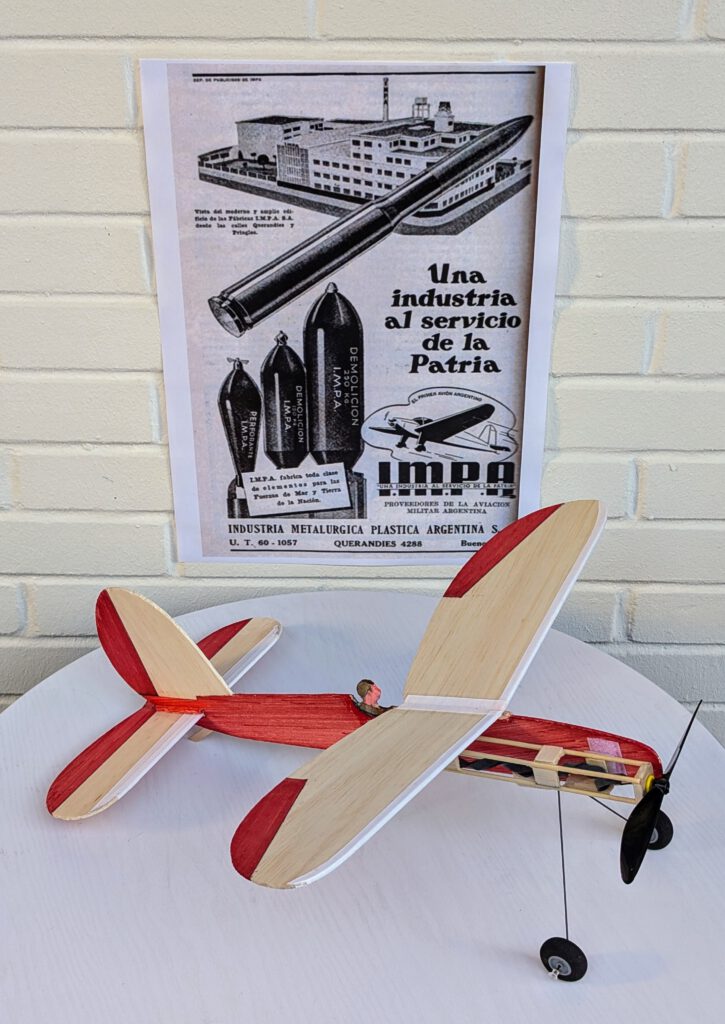
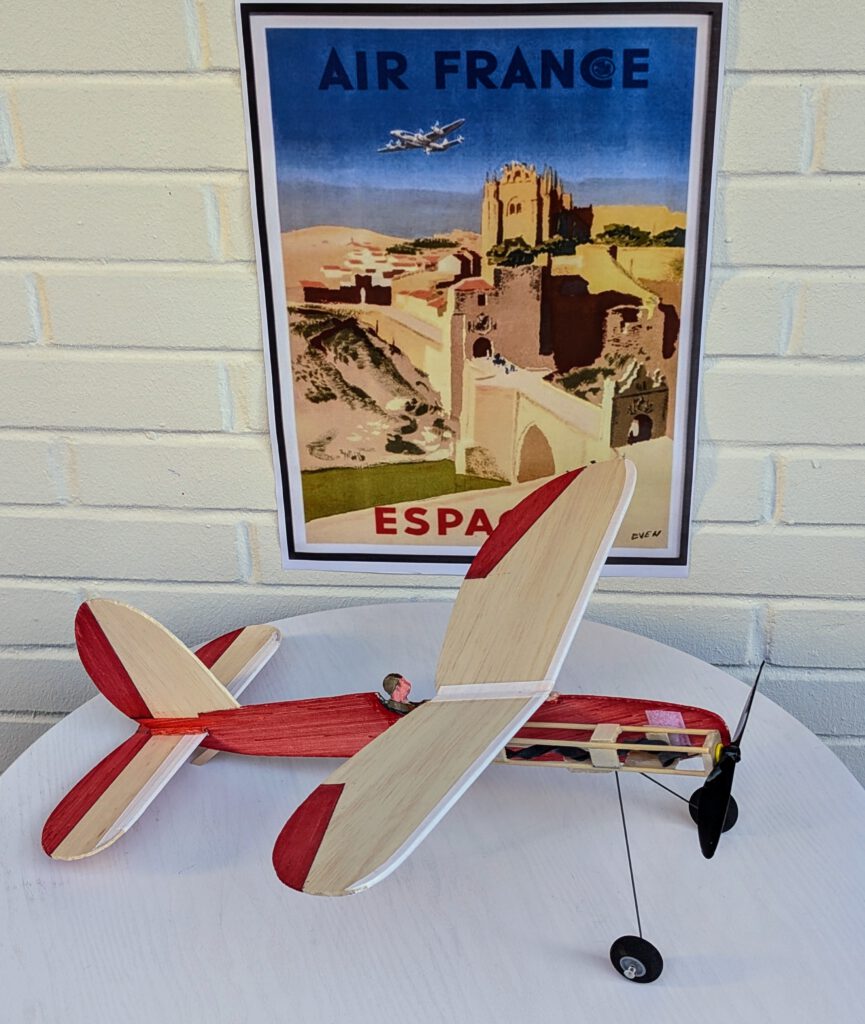
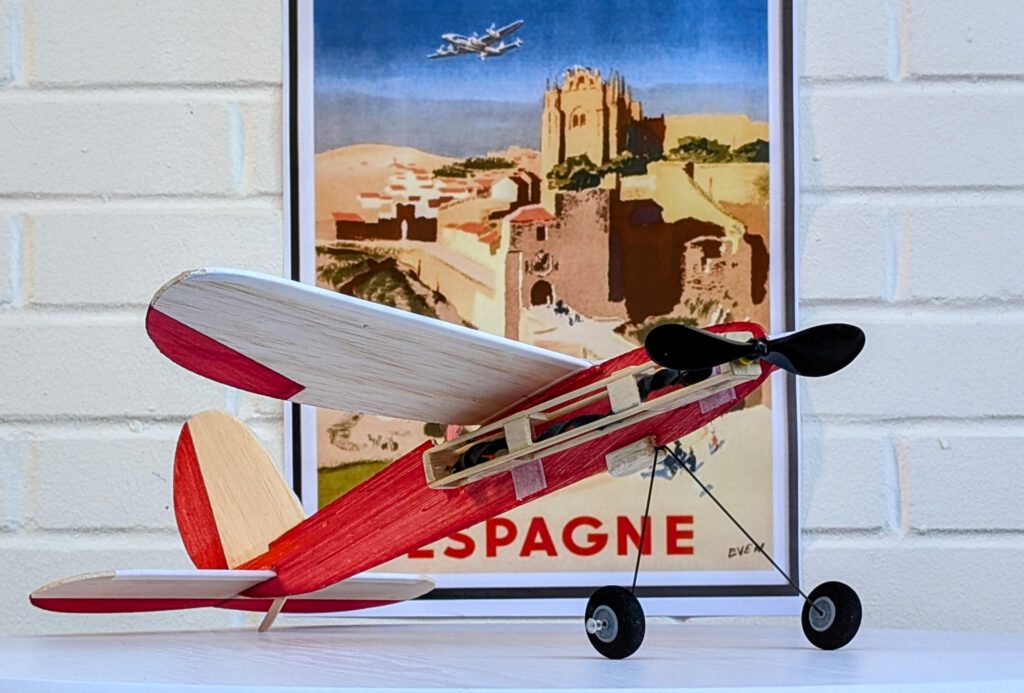
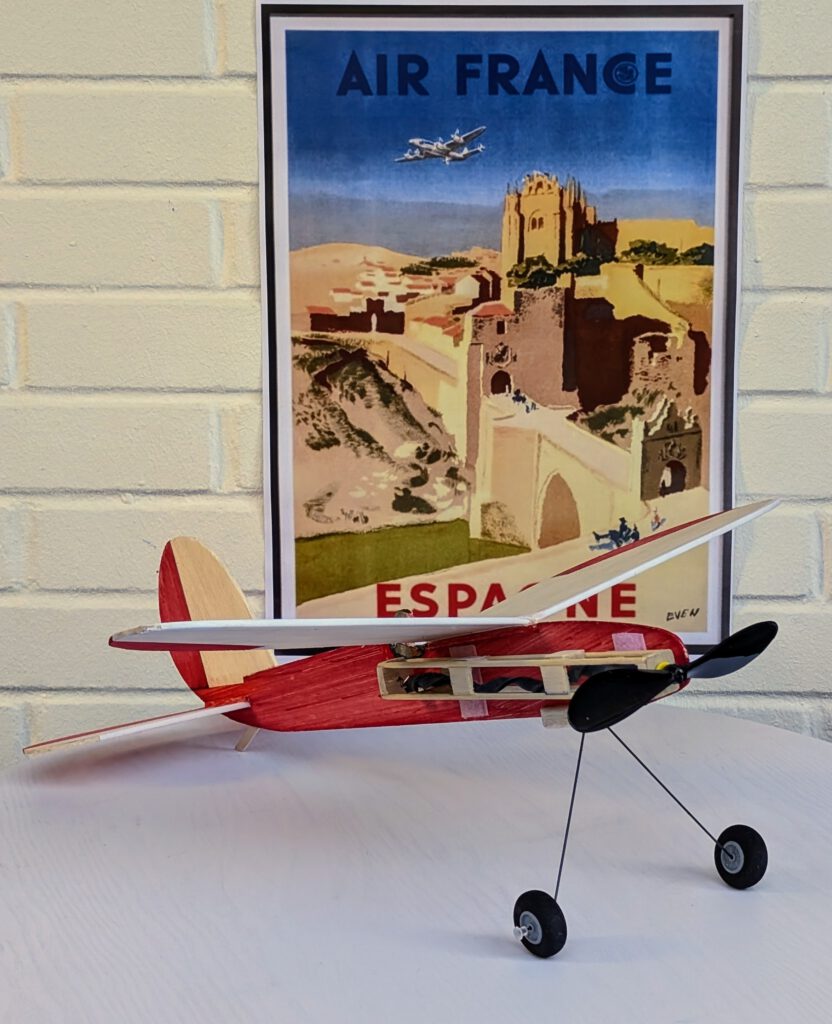
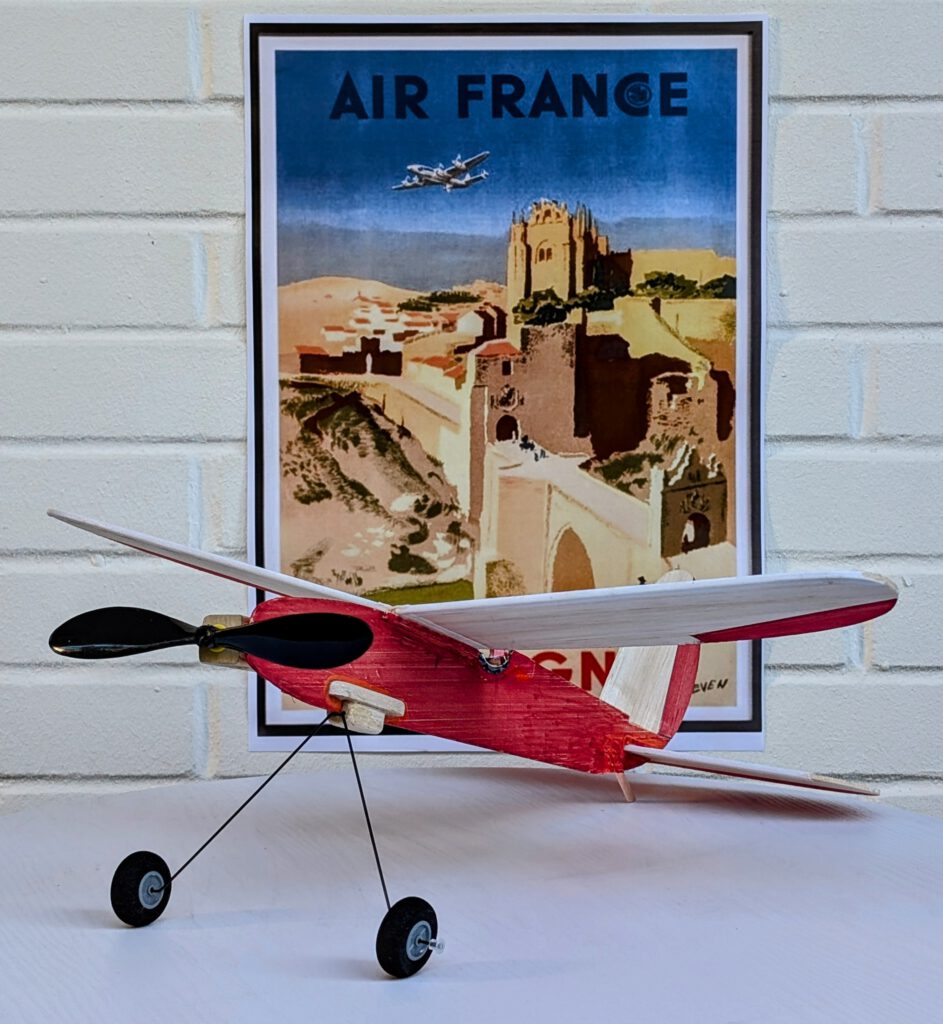
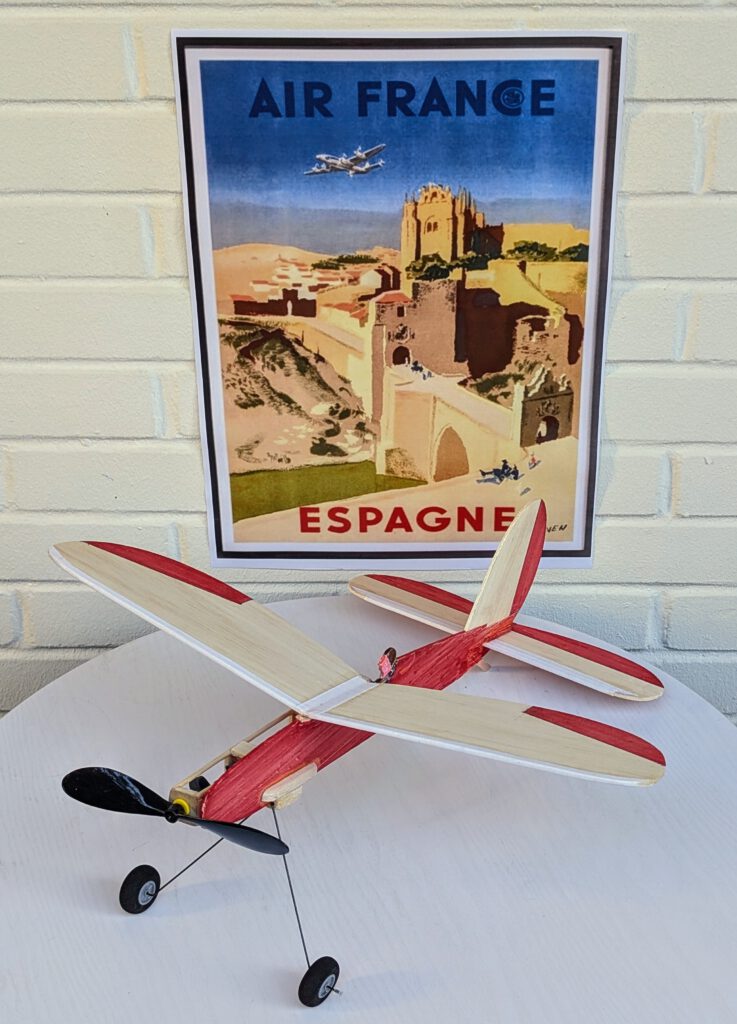
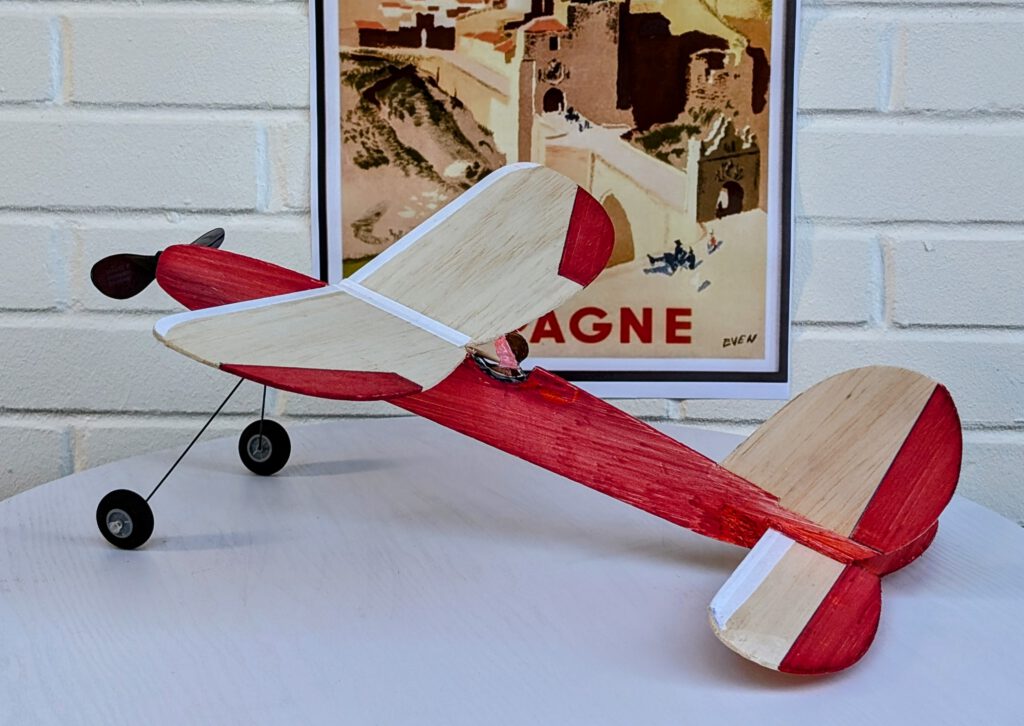
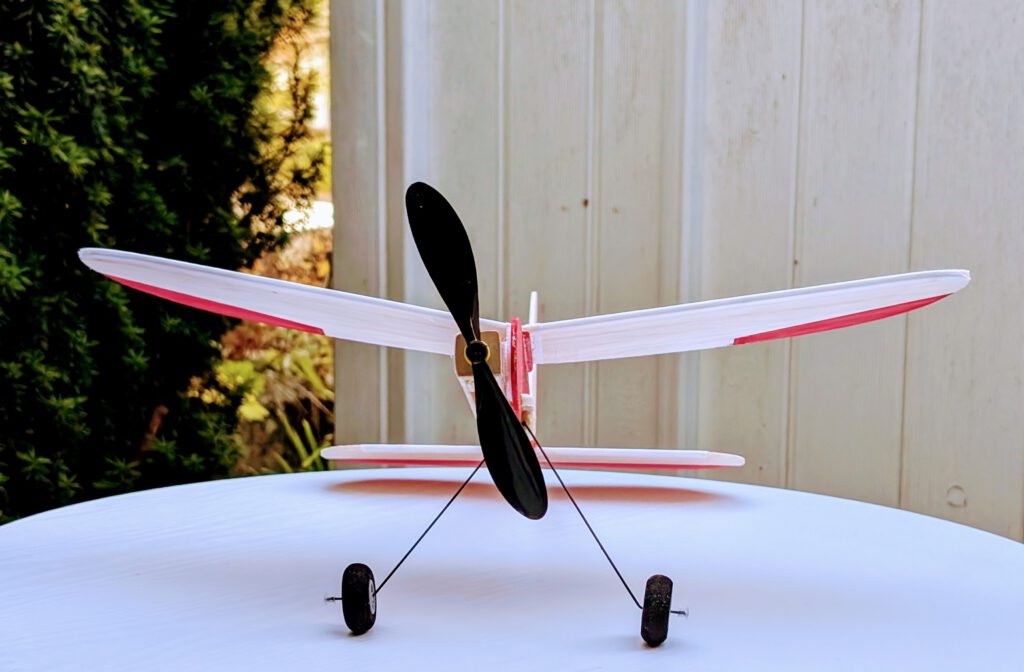
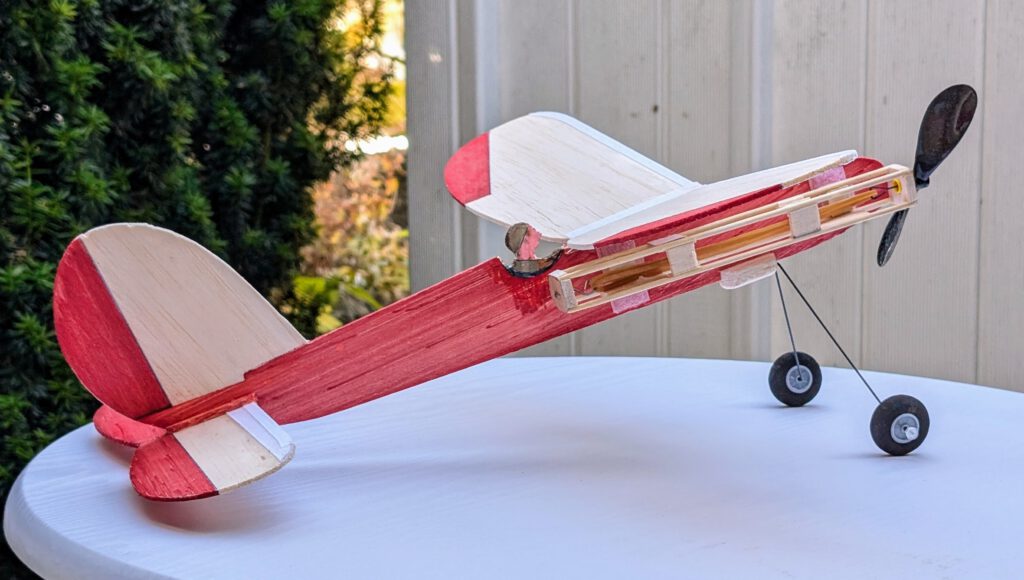
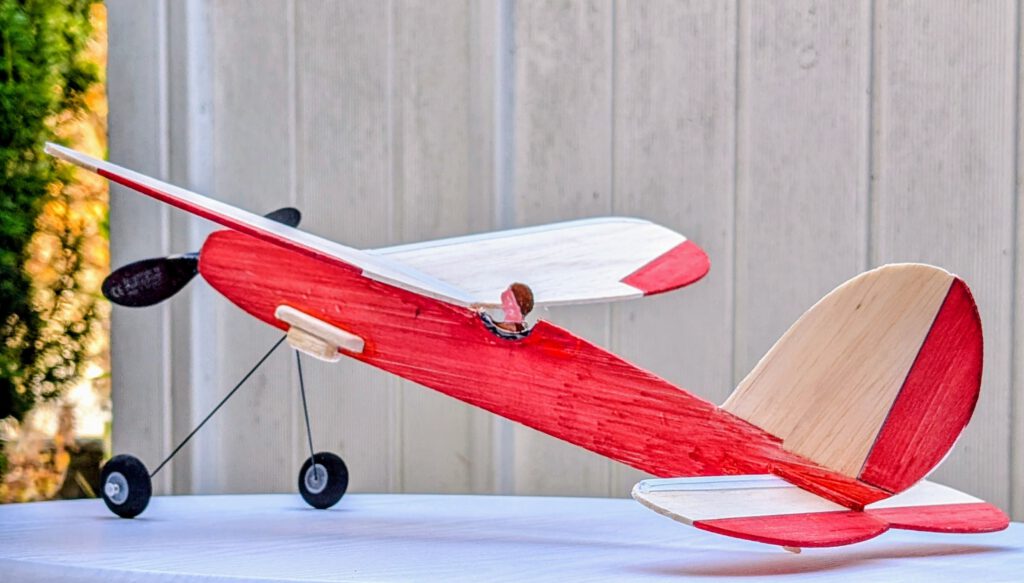
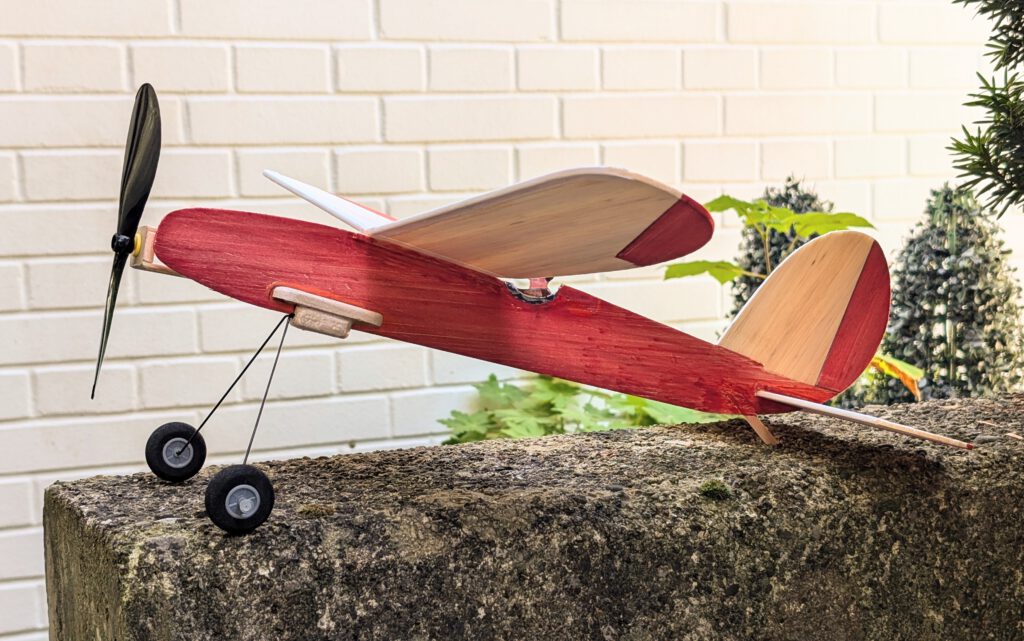
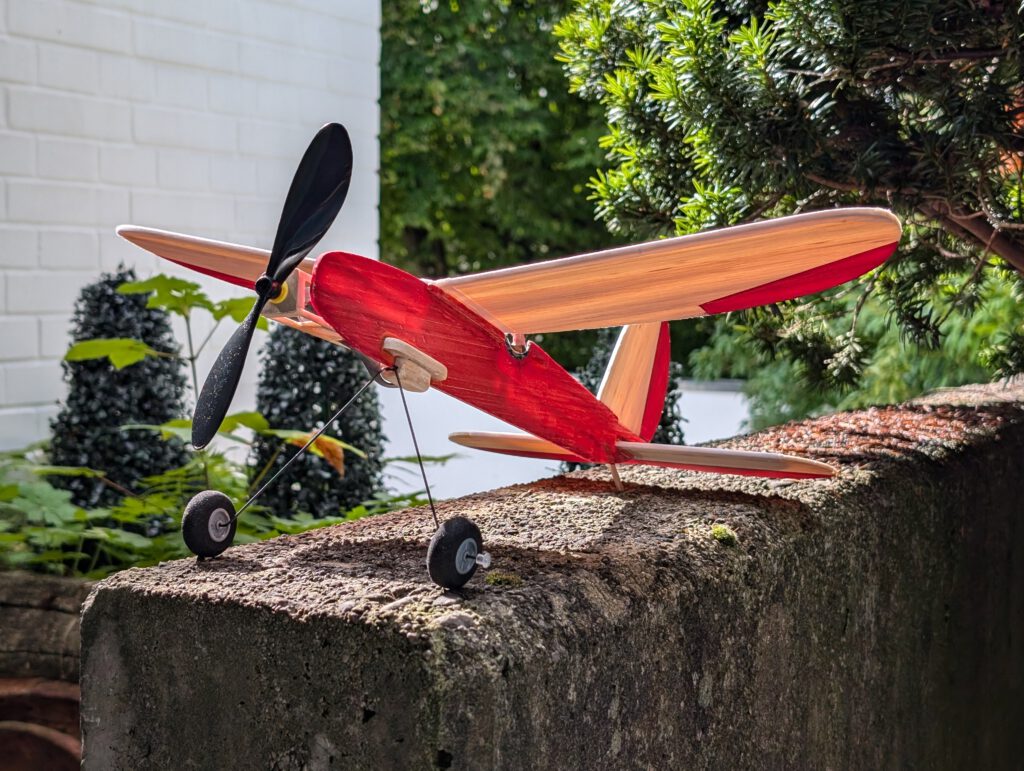
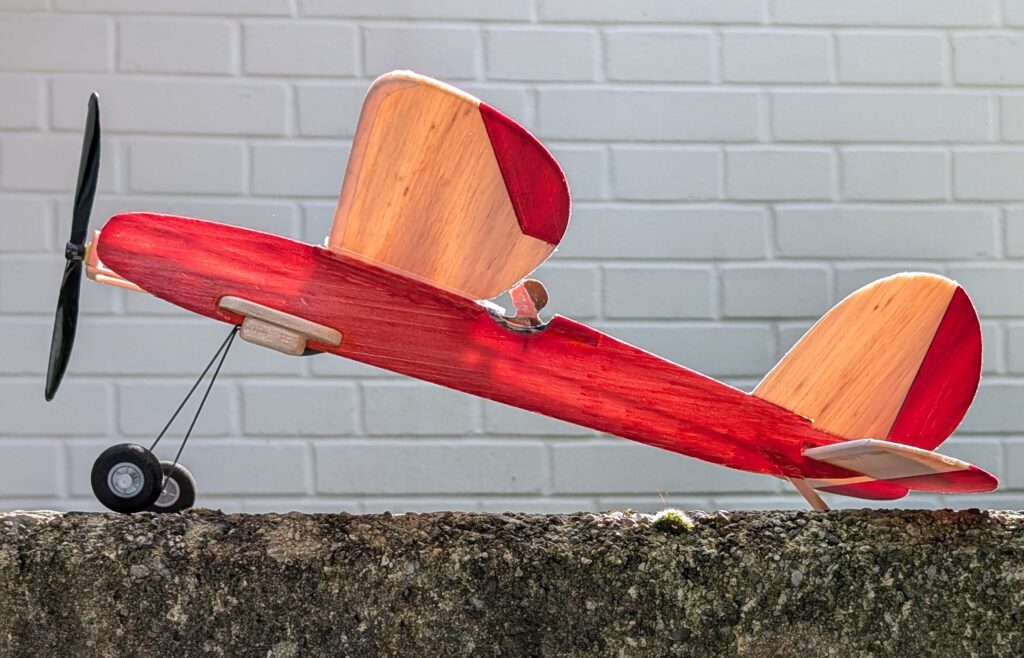
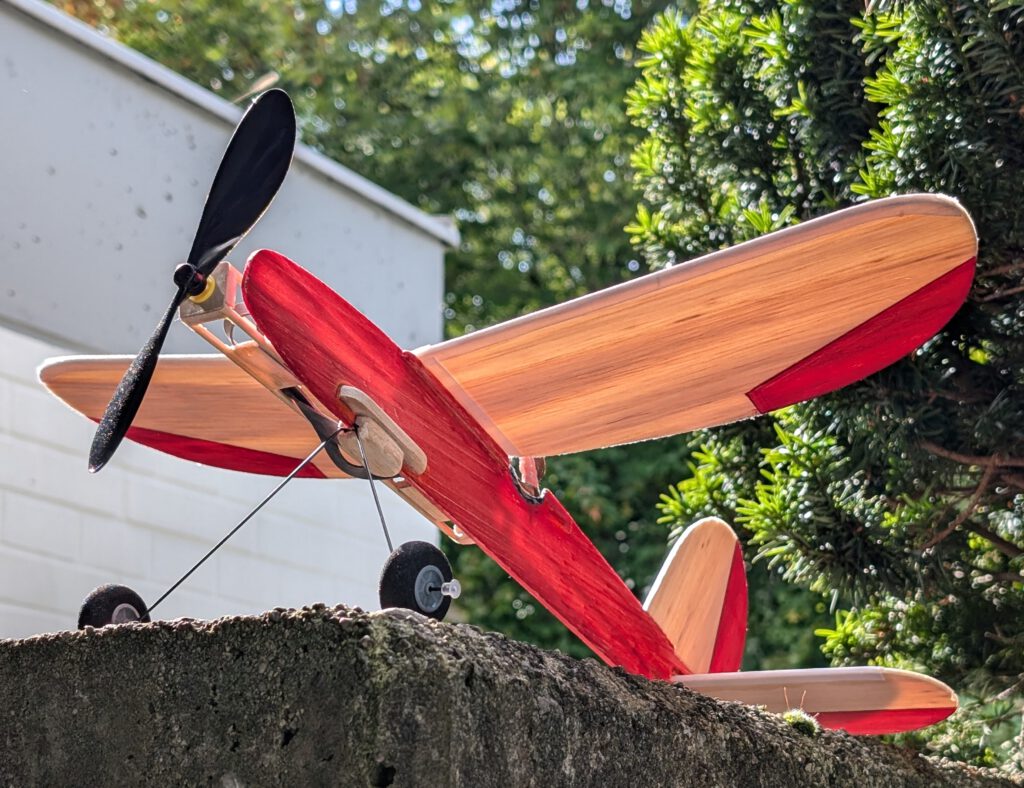
What is RPU?
RPU stands for rubber power unit.
This is a device designed for the modelbuilder who likes to fly many models with one only powerunit. Main material of the RPU comes from the grocery store around the corner: four barbecue skewer chopsticks. Add to them scratch balsa, a hook made from piano wire, some black rubber and a commercial plastic airscrew. That’s all.
The unit is attachable through two pieces of Velcro tape and can thus be used for example first on a little Spitfire five minutes later on a Mitsubishi Zero and ten minutes later on a Macchi Folgore of the same configuration. You build only one RPU and use it on as many modelplanes as you wish.
Models with RPU use the same asymmetrical principle as is known from No-cal models. From the one side they look handsome as from the other the power unit disturbs the harmonic view considerably.
Generally there is no great difference between the flight performances of a balsa sheet profile model with built-in rubber motor and a model flying on a RPU.
Why not try both principles? Among the plans range of beginner.zone you will find models of both categories. Sit down, build, fly, compare!
I developed and tested three different types of RPUs.
- The one for small models of 30 cm / 11.8 in to 40 cm / 15.75 in wingspan is the RPU 20 (lenghth 20 cm / 7.9 in).
- The one for medium sized models with a span of 40 cm / 15.75 in to 60 cm / 23.6 in is the RPU 30 (length 30 cm / 11.8 in).
- The one for larger models of up to 80 cm / 31.5 in wingspan is the RPU 40 (length 40 cm / 15.75 in).
- The RPU 40 is made from slightly different material. Instead of the skewer chopsticks it uses two strips of bamboo wooden sticks (400 x 9 x 3 mm). The rest is identical.
Building the balsa sheet model No hay más cerveza en la nevera RPU 20
Materials:
Fuselage: B 2; undercarriage attachment part: B 10 block; undercarriage attachment support: B strip 5 x 5; wing: soft B 2; wing support: B strips 3 x 3 or 4 x 4; fin: hard B 1 or B 1.5; horizontal stabilizer: light B 1.5 or B 2; horizontal stabilizer support: B strips 3 x 3; tail skid: pine wood 1.5 or 2 mm diameter or bamboo; commercial model landing gear with wheel diameter 25 mm / 1 in; linen band width 10 or 12 mm / ½ in; Velcro tape with adhesive backside; ballast: steel or lead.
Assembly:
Cut out balsa parts in accordance to plan. Make slot for horizontal stabilizer into rear end of fuselage part. Sand well. If coloring is desired, do it now.
Fuselage:
Fix fuselage part on building board and cement fin on it (photo). Use needles. Visually check symmetry as both parts must be 100 percent in line.
Add tail skid and let dry.
Cement wing support strips at given places on both sides of the fuselage holding them with needles or clamps.
Make small cutout on underside of fuselage for landing gear.
Saw and sand balsa blocks that serve as seats for landing gear (photos). Make cutouts into blocks that correspondent to size of commercial or selfmade landing gear. Bevel all corners. Cement block to fuselage and let dry (photo). Cement 5 x 5 landing gear block support strip as seen on plan.
Wing:
Wing consists of a right and a left wing half.
Reinforce leading edges of both wing halves with linen band (photo) and let dry.
Fix one wing half with needles on building board and underlay wing tip of corresponding wing half according to given dihedral.
Join both halves and cover wing center area with linen band (photo). Let dry. If wing has the tendency to rest only on one side then it is too heavy on this side. To compensate the imbalance disperse an amount of white wood glue on the opposite wing half’s tip area. Do it if necessary twice until balance is obtained.
Final Assembly:
Put fuselage on “third hand”. Cement wing on wing supports using needles to hold in place. Doublecheck visually symmetry. Let dry.
Put horizontal stabilizer into fuselage slot and cement (photo). Again check symmetry and let dry.
Stick two pieces of Velcro according to your RPU on right fuselage side.
For balancing your model properly install RPU with airscrew as well as put landing gear into its slot and start testgliding over tall grass. Add ballast according to your test results. Note given position of CG on plan.
Remember correct center of gravity (CG) is essential for successful flights.
Note: Assembling this model has cost you much more effort and time as previous models. Proper landing gear installation is indeed a complex issue for a beginner. But building and flying this model in comparison to a simpler design will very well tell you the difference. Be sure!
Observations:
Not a racehorse but indeed a fast flying model which masterfully flies straight ahead. Would glide better if it had profiled wing. Fly over grass!
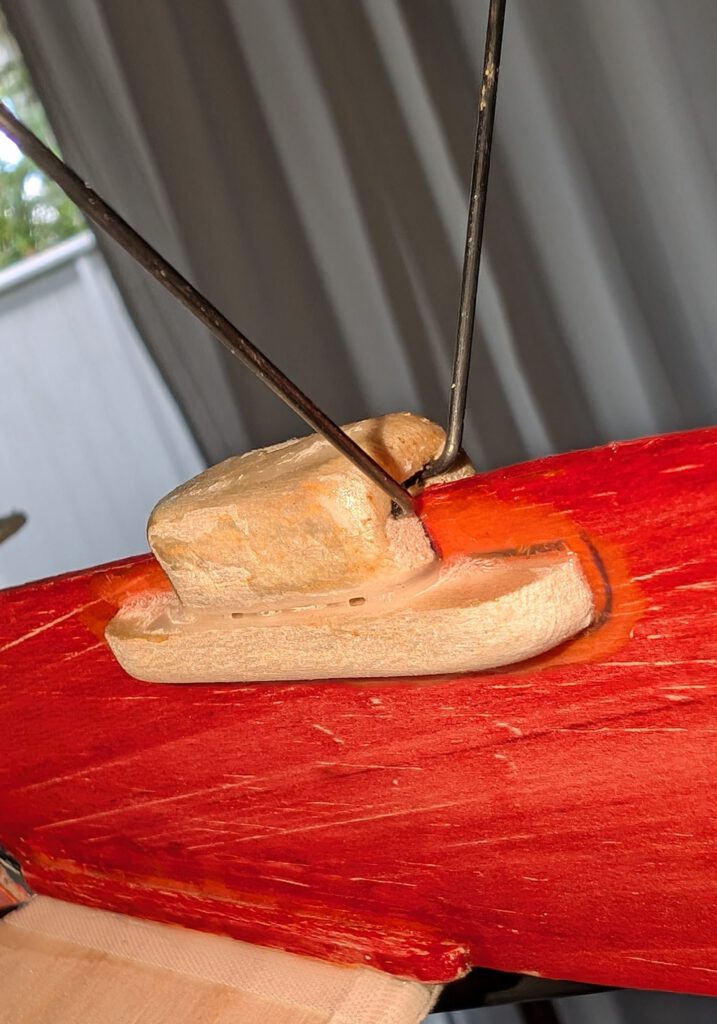
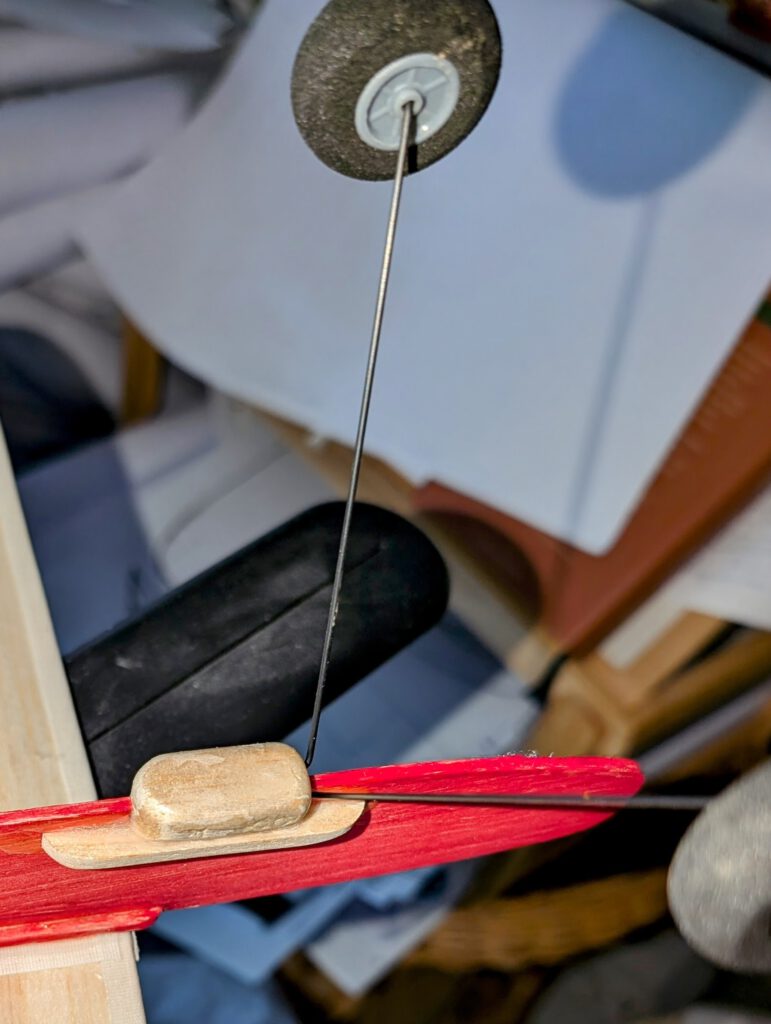
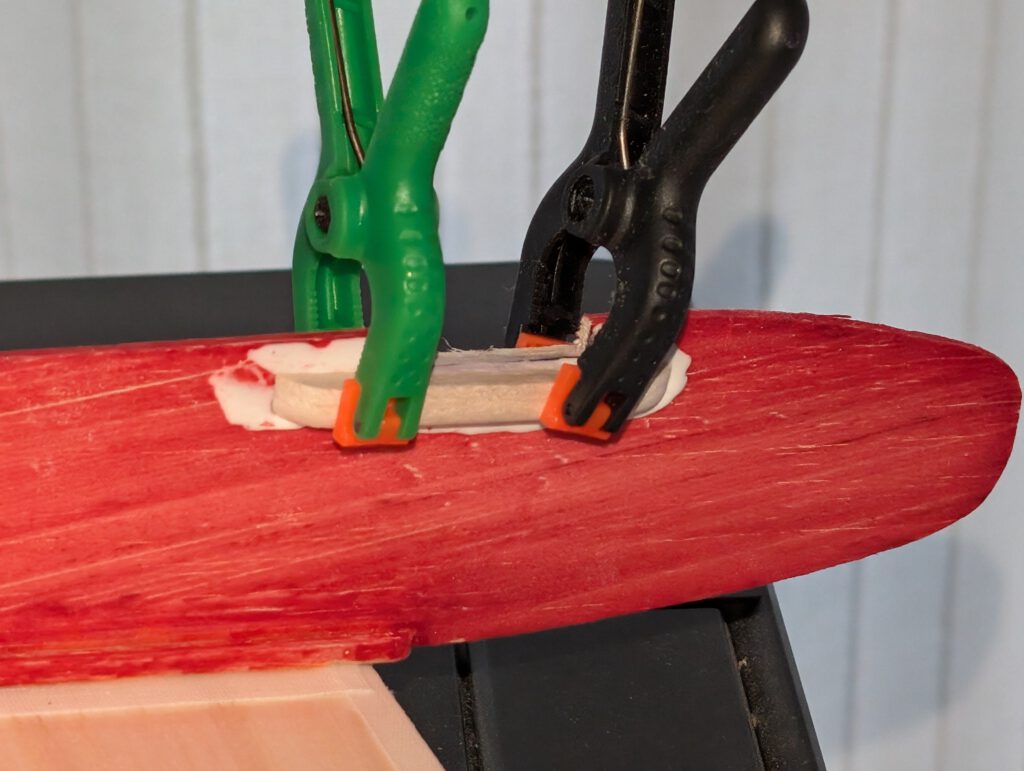
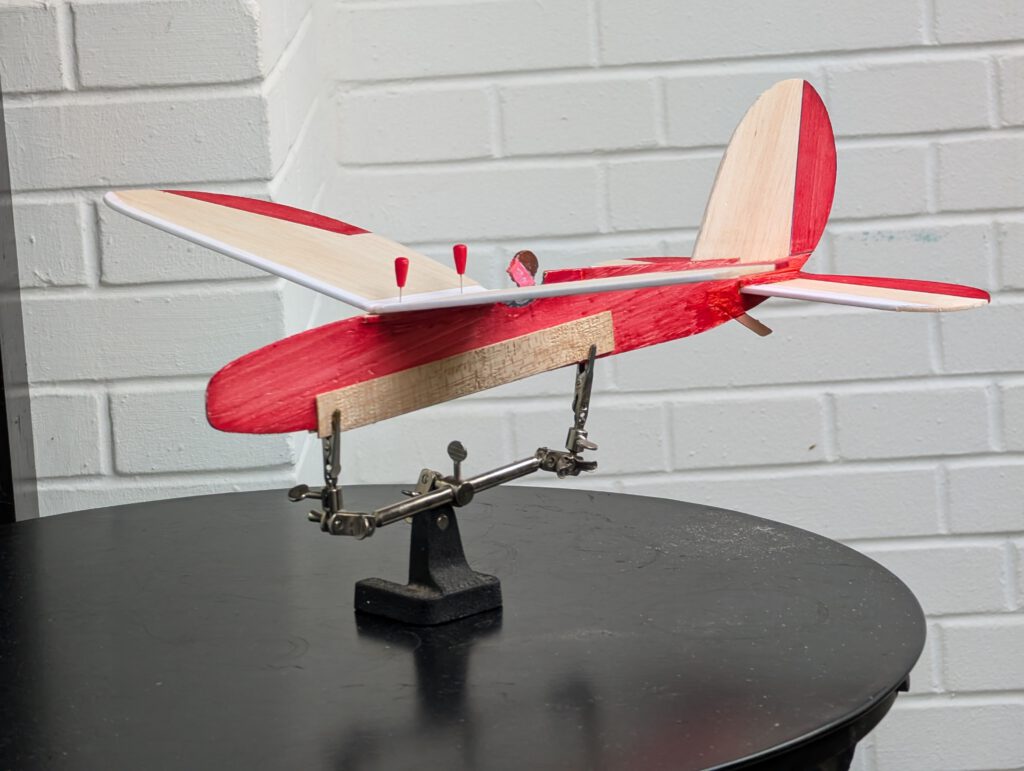
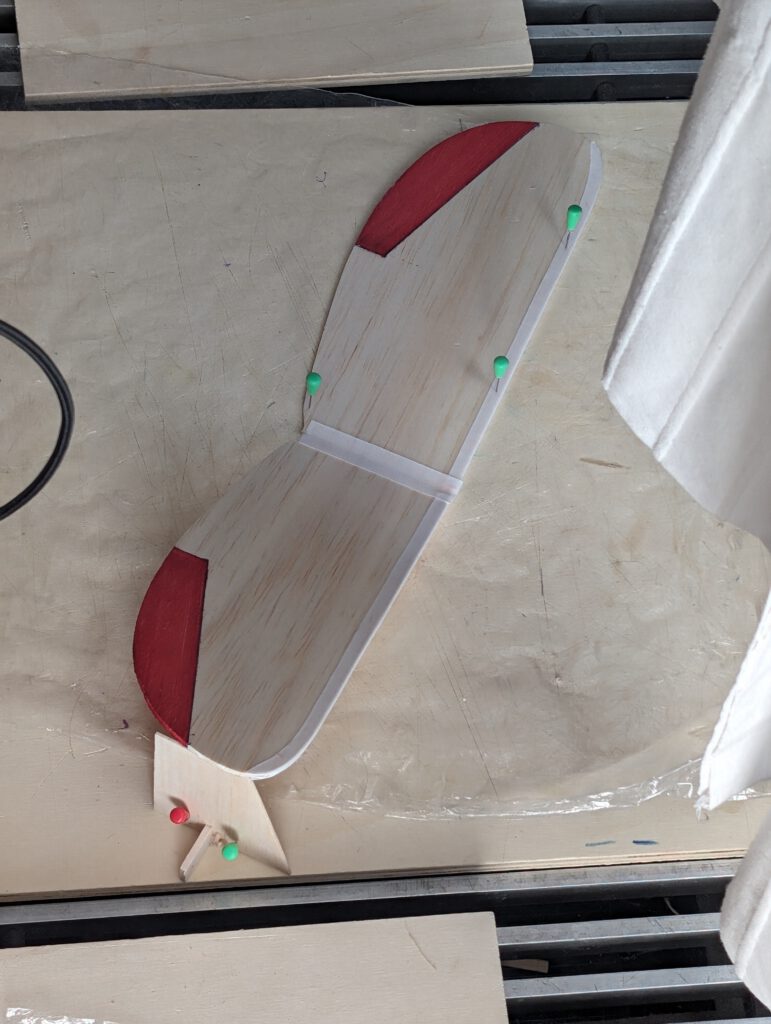
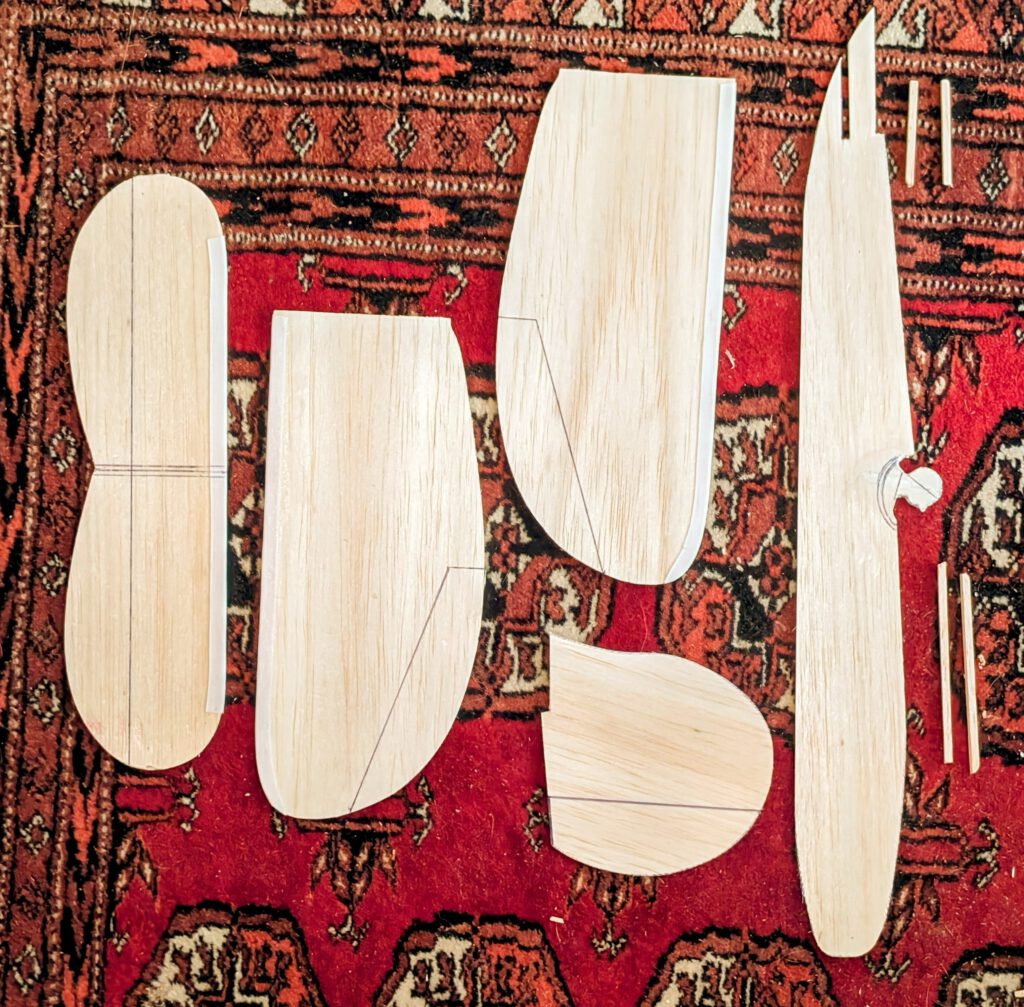
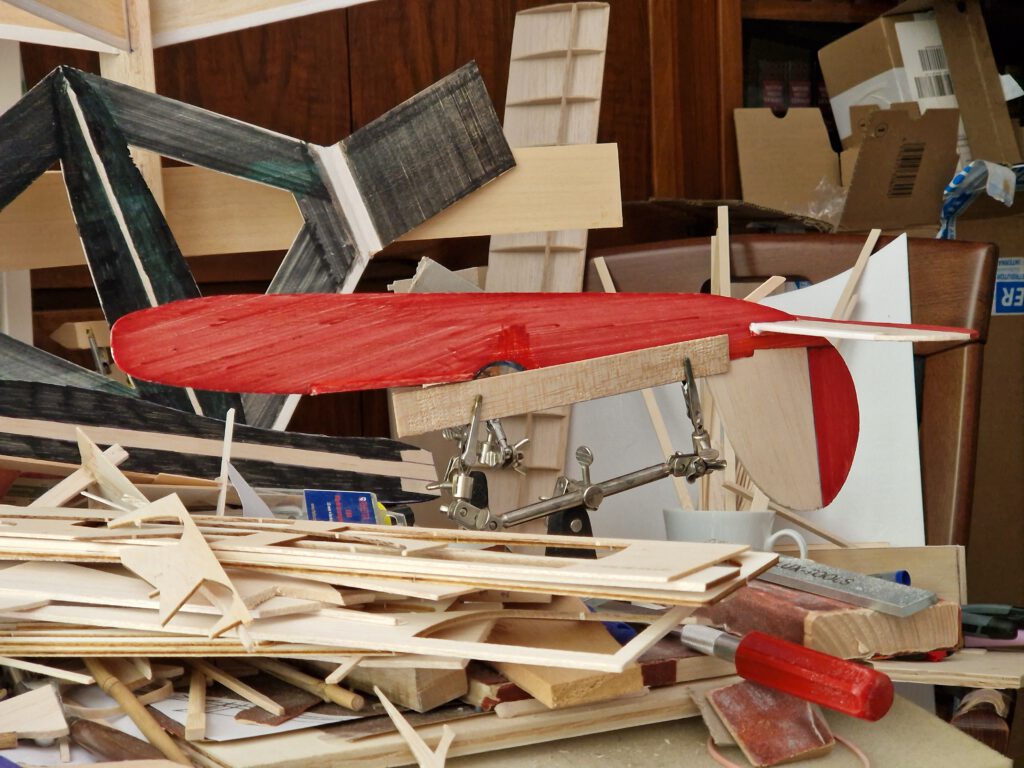
¡Muchos vuelos agradables! (çok keyifli uçuşlar!)

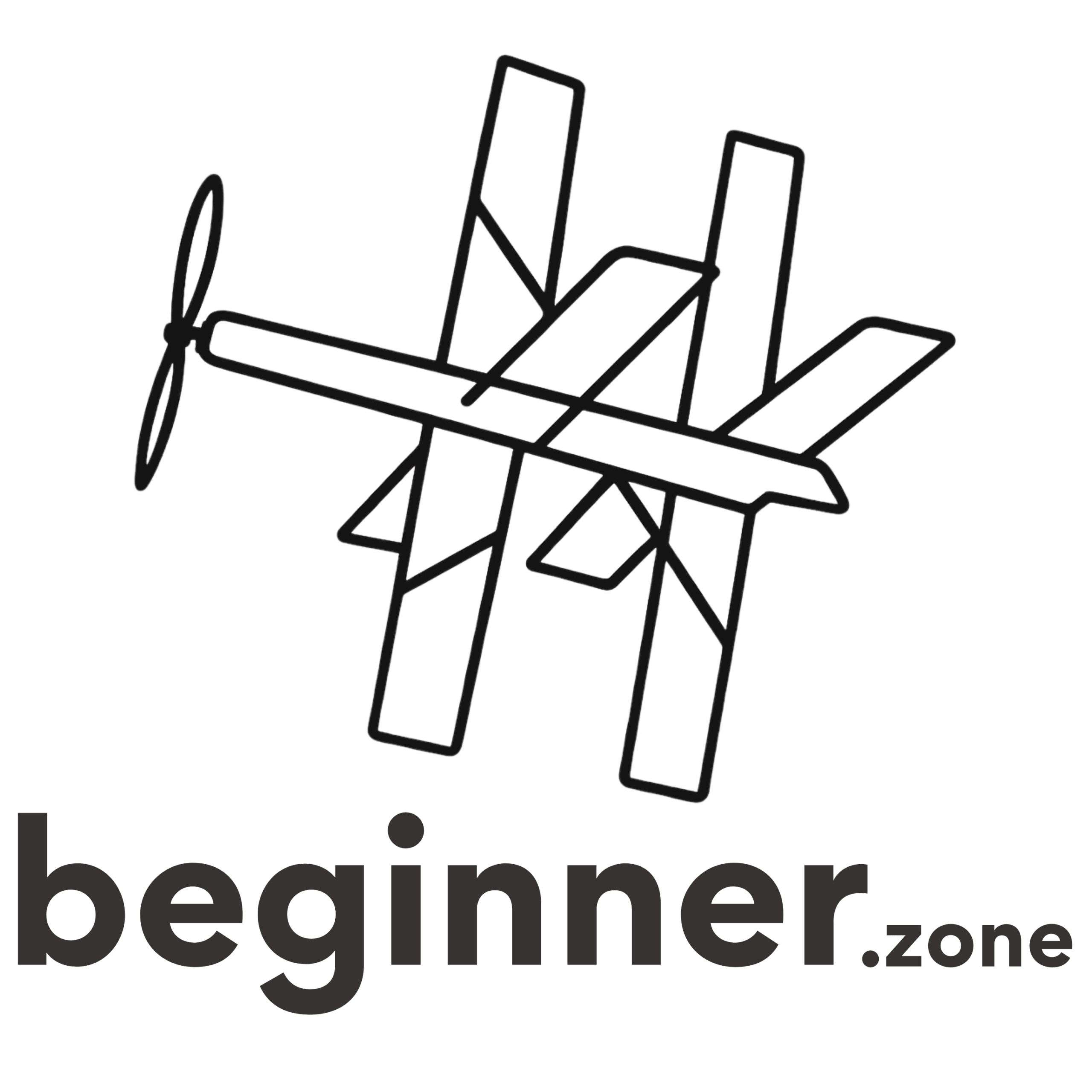
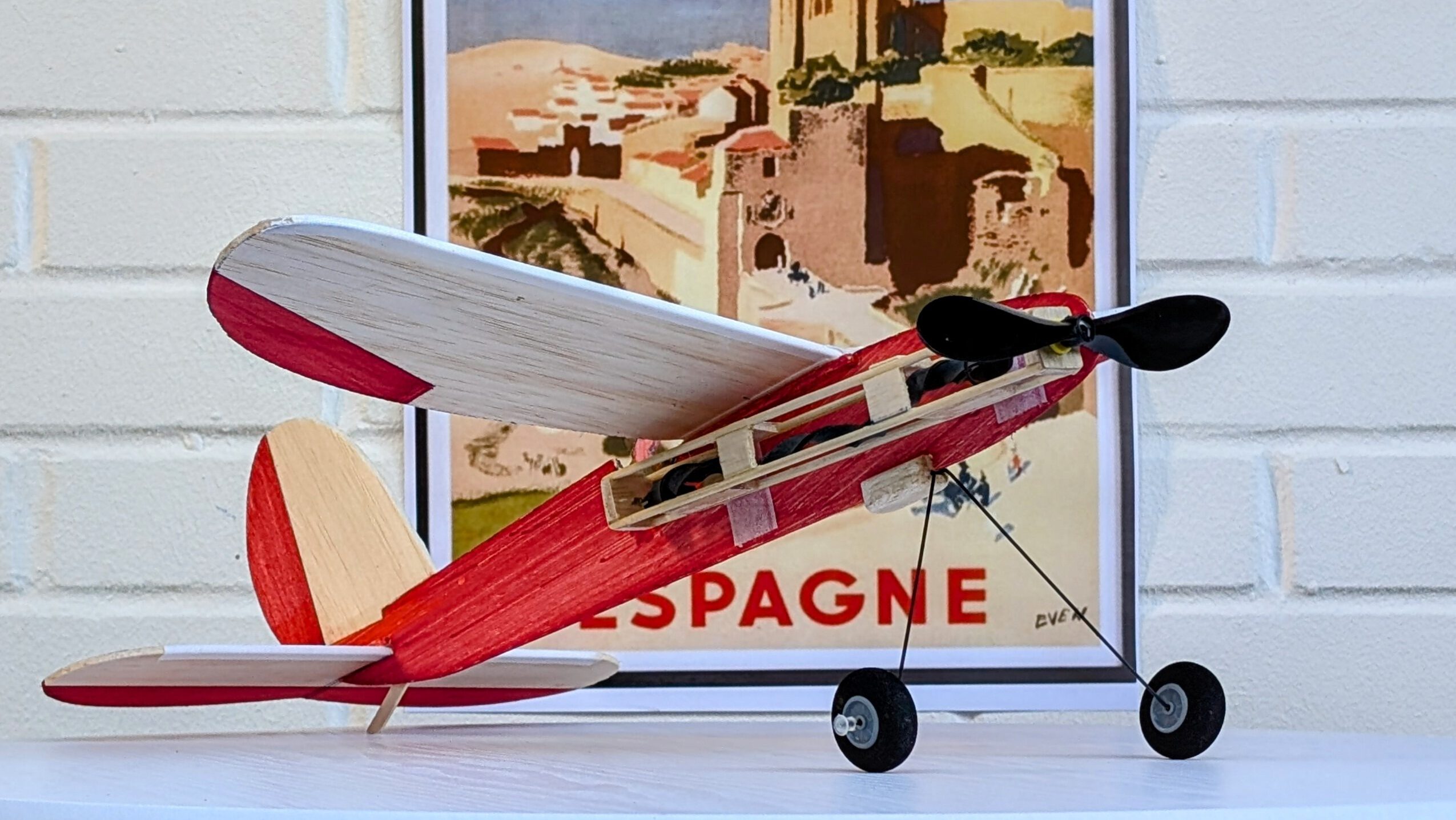
Leave a Reply